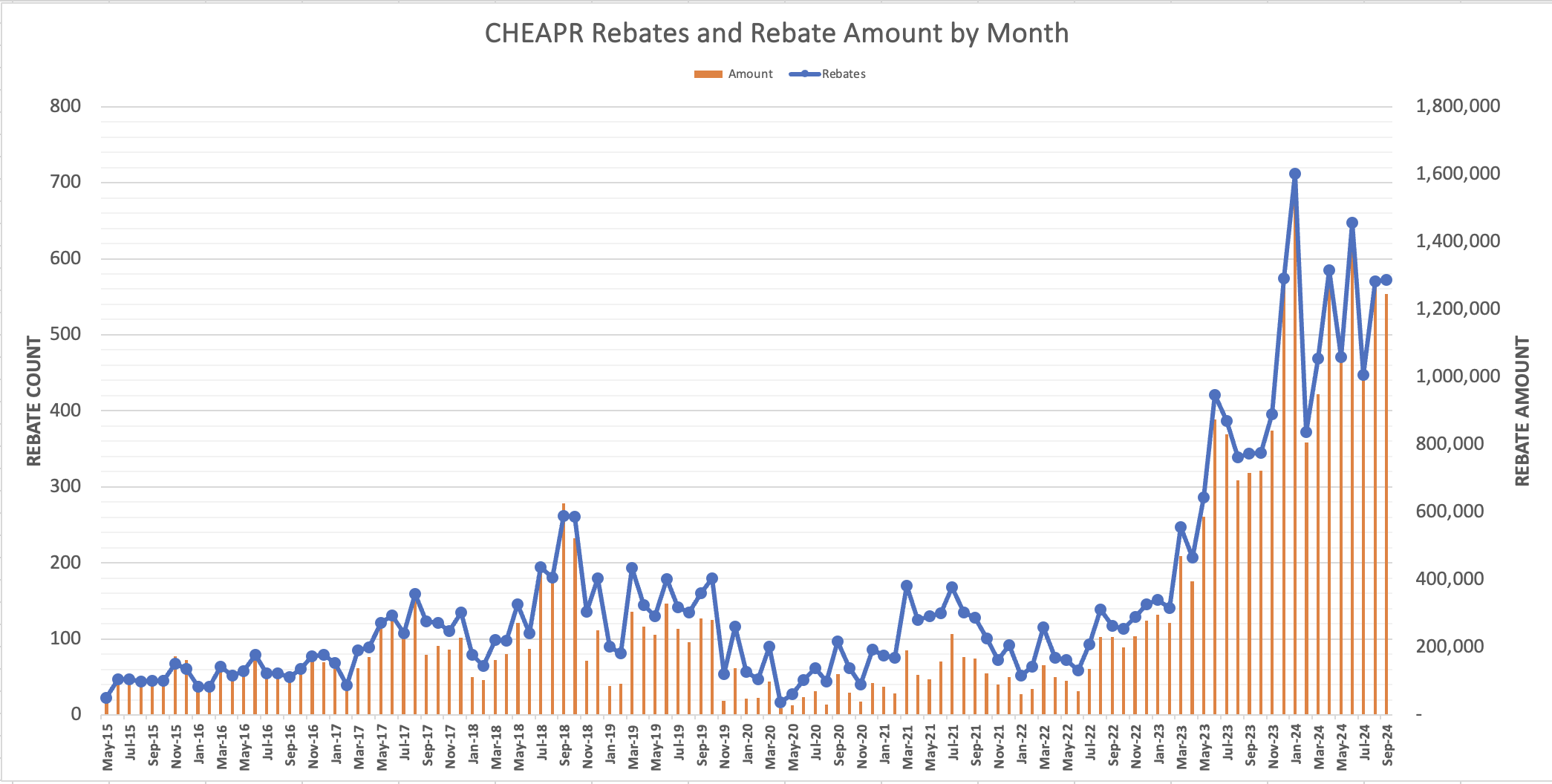Program Changes for 2025 Have Been Announced
Rebates have been running hot for this program for the past couple of years as can be seen in the graph. It has gotten to the point that the Department of Energy and Environmental Protection (DEEP), which administers the program, is concerned about funds depletion. To lower the temperature somewhat, the rebate for a battery electric vehicle is being reduced from $2250 to $1500 as of January, 2025. The BEV rebates have been accounting for 80% of the program expenditures.
Somewhat offsetting these cuts will be increases to the Rebate+ part of the program targeted to those who live in distressed communities, and individuals with a household income of less than 3 times the federal poverty level or who participate in certain government assistance programs such as food stamps or free school lunches.
The new rebate schedule is as follows:
- New BEV – from $2250 to $1500
- New BEV+ – from $4250 to $4500
- New PHEV – unchanged at $750
- New PHEV+ – unchanged at $1125
- Used BEV+ – from $3000 to $5000
- Used PHEV+ – from $1125 to $3000
During the most recent full month of reporting, September, there were 572 rebates, responsible for disbursements of $1,246,000. 491 were BEVs for an expenditure of $1,107,000, or 89% of the total.
There is a statutory limitation that the BEV+ increase can be twice the standard BEV rebate or $1500 + $3000.
Financial Impact
To give an idea of the impact of the changes, this is what September would have looked like. The new rebate levels would have reduced the expenditure in September by $429,000, or 34%. There were 4 rebates for BEV+ used and 20 rebates for BEV+ new. The offsetting increases would have cost an additional $13,000, though there are clearly hopes for growing this segment of the program. As it stands, it nets to a 33% reduction in burn rate.
Suggestion for Rebate+ Used
Vehicles eligible for the used rebate had to have been eligible as new vehicles. We feel that this needlessly restricts to available pool of vehicles and is confusing for consumers. The program has twice changed the MSRP cap and vehicle prices (and eligibility) have fluctuated, leaving a hodgepodge selection. For Rebate+, individuals have to demonstrate eligibility. The other rule is counterproductive.
Fleet Incentives
This is the final piece of the program that has not been introduced. It is expected to be in 2025 but no specific start date has been announced. The fleet incentives apply to commercial, non-profit, municipal and tribal entities. These incentives will have a finite pool of funds. Applications will be taken and prioritized with a focus on distressed communities and high-mileage vehicles.
The next CHEAPR board meeting is December 12th at 3PM.


1 thought on “Reduced CHEAPR BEV Incentive and Other Changes for 2025”
Comments are closed.